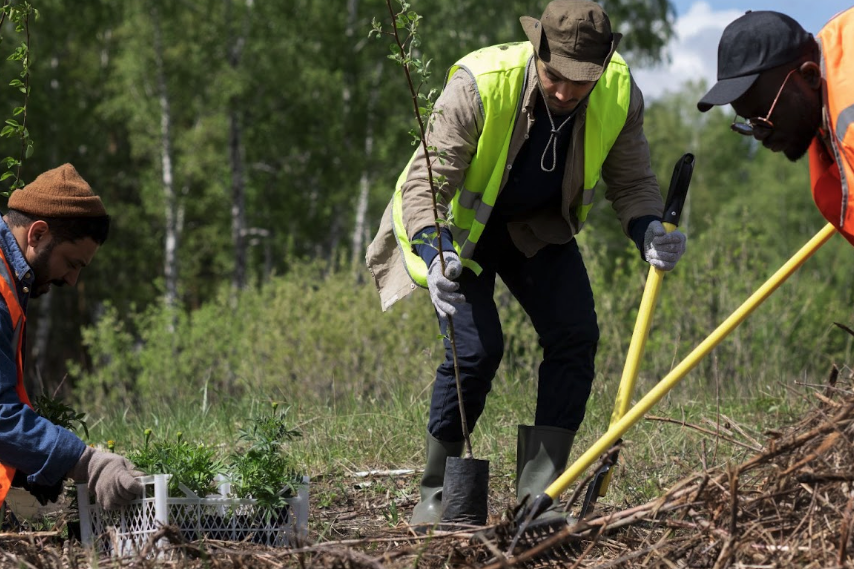Introduction
Mistakes on clearance projects cost time and money. In Florida those mistakes often trigger fines or forced mitigation. This article calls out the common errors I see again and again and gives direct fixes you can implement immediately. Follow these steps and you reduce the chance of rework, stop-work orders, and angry regulators.
Mistake 1: clearing before you know the site
The single biggest blunder is starting work without a proper site assessment. Wetland edges, protected trees, and wildlife signs are not obvious to everyone. If you start without a survey you often have to stop, restore, and apply for permits retroactively.
Fix this: commission a wetland delineation and a wildlife sweep before the first cut. Put those findings on the contractor’s map and make them part of the contract.
Mistake 2: treating permits as optional
Too many teams assume clearing is “low risk” and skip pre-application conversations. In Florida, local, state, and sometimes federal sign-offs matter. Skipping them leads to delays and big fines.
Fix this: identify required approvals early. If the land touches sensitive areas, plan for state or U.S. Army Corps engagement. Build permit timelines into your project schedule, not after it.
Mistake 3: late or inadequate erosion controls
Installing silt fences after trees come down is common and costly. Sediment moves fast; controls installed late fail more often than not.
Fix this: install erosion and sediment controls before clearing starts. Inspect daily during active work and after storms. If controls fail, repair immediately and document the repair.
Mistake 4: wrong equipment for the conditions
Using heavy dozers in soft sand or near retained trees compacts soil and kills roots. That damage shows months later and often requires remedial planting or replacement.
Fix this: match equipment to the site. Use tracked machines or matting in soft soils, and mulchers or smaller excavators near preserved trees.
Mistake 5: poor tree protection
Developers often mark trees on paper but fail to protect root zones in the field. Parking, stockpiles, or turning radius in these zones kills trees slowly and triggers replacement orders.
Fix this: install visible fencing around root protection zones and forbid parking or material storage inside. Enforce this with daily toolbox talks.
Mistake 6: no wildlife protocol
When workers find a burrow or nest and keep going, the project becomes a legal mess. Even well-meaning relocation attempts by unpermitted staff cause harm.
Fix this: establish a stop-work protocol. Post the biologist or agency contacts on site and require crews to secure the area and call the consultant immediately.
Mistake 7: sloppy debris handling
Dumping debris near wetlands or unpermitted disposal will earn you citations and cleanup orders. Hauling everything offsite without checking options wastes money.
Fix this: plan debris reuse. Chip and use mulch onsite for stabilization; compost leaves; sell merchantable timber. Keep manifests for anything taken offsite.
Mistake 8: poor communication with neighbors and agencies
Silence breeds suspicion. When neighbors see trees falling without notice, they call regulators or organize opposition.
Fix this: notify neighbors with a simple one-page schedule and a contact number. If NGOs might care, offer a short meeting showing how habitat will be protected.
Mistake 9: not budgeting for mitigation
Some teams assume mitigation is unlikely and leave no contingency. If mitigation is required, it can be a large, unplanned expense.
Fix this: budget a mitigation contingency early if surveys suggest sensitive resources. Get mitigation bank pricing in advance for realistic numbers.
Mistake 10: insufficient monitoring after clearing
Clearing is not done when the machines leave. Erosion and wildlife issues often appear in the weeks after clearing.
Fix this: set up a post-clearing monitoring schedule with daily inspections initially, then weekly. Keep photos and a short log. Quick fixes are cheap compared to major remediation.
Final checklist for avoiding most mistakes
Get surveys before work. Lock in permits. Install erosion controls first. Protect trees physically. Train crews on wildlife protocols. Reuse debris. Notify neighbors. Budget mitigation. Monitor after clearing.
Conclusion
If you manage land clearing fort myers projects, avoid mistakes by treating environmental steps as part of engineering, not as optional extras. A little planning up front prevents expensive stops and restarts later. Do the assessments, protect the resource, and document everything, your schedule and wallet will thank you.






